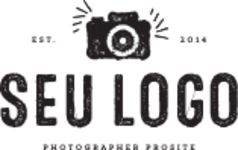Global Pharmaceutical Continuous Manufacturing Industry: Key Statistics and Insights in 2025-2033
Summary:
- The global pharmaceutical continuous manufacturing market size reached USD 1.5 Billion in 2024.
- The market is expected to reach USD 3.3 Billion by 2033, exhibiting a growth rate (CAGR) of 9.62% during 2025-2033.
- North America leads the market, accounting for the largest pharmaceutical continuous manufacturing market share.
- Small molecules account for the majority of the market share in the therapeutics type segment, which can be attributed to their enhanced efficiency and consistency.
- Solid formulation holds the largest share in the pharmaceutical continuous manufacturing industry.
- Final drug product manufacturing remains a dominant segment in the market due to the rising focus on cost-effective solutions.
- Pharmaceutical companies represent the leading application segment.
- Regulatory support is a primary driver of the pharmaceutical continuous manufacturing market.
- The rising focus on improved efficiency and increasing demand for cost-effective solutions are reshaping the pharmaceutical continuous manufacturing market.
Grab a sample PDF of this report: https://www.imarcgroup.com/pharmaceutical-continuous-manufacturing-market/requestsample
Industry Trends and Drivers:
- Regulatory Support:
Regulatory bodies are playing a crucial role in driving the adoption of continuous manufacturing. These agencies view the technology as a means to improve drug quality, consistency, and production efficiency. By promoting the use of real time monitoring and control technologies, they help manufacturers ensure that each product meets strict safety and quality standards. Additionally, regulatory agencies are offering streamlined approval pathways for drugs produced via continuous processes, reducing barriers to market entry. This regulatory backing not only instills confidence in manufacturers but also accelerates innovation and investment in continuous manufacturing systems. The emphasis on quality-by-design (QbD) principles further aligns with the goals of continuous production, where real time adjustments minimize the risk of defects, enhancing both efficiency and compliance with regulatory standards.
- Rising Focus on Improved Efficiency:
Pharmaceutical continuous manufacturing aids in enhancing production efficiency as compared to traditional batch methods. Continuous processes run non-stop, reducing downtime while allowing for higher throughput in a shorter amount of time. This is leading to significant cost savings, as the need for labor-intensive batch processes, cleaning, and equipment changeovers is minimized. Continuous manufacturing also lowers the risk of human error and contamination, improving overall product quality. Additionally, the ability to integrate real time monitoring and process control ensures consistent output, reducing variability between batches. These efficiency improvements translate into faster production cycles, shorter time-to-market for drugs, and greater flexibility in meeting market demand.
- Cost-Effectiveness:
Cost-effectiveness is a major driver behind the growing shift to continuous manufacturing in pharmaceuticals. The ability to produce drugs at a constant rate with minimal interruptions reduces the costs associated with labor, raw materials, and energy consumption. Continuous manufacturing also minimizes waste by streamlining the production process and ensuring that each batch meets predefined quality specifications. Furthermore, the smaller equipment footprint and reduced need for intermediate storage are leading to lower capital and operational expenditures. These cost benefits are particularly significant for high-volume drug production, where even small inefficiencies in traditional batch processes can lead to substantial financial losses. Pharmaceutical companies adopting continuous manufacturing are better positioned to maintain profitability while offering affordable medications to a broader market.
The pharmaceutical continuous manufacturing market report provides a comprehensive overview of the industry. This analysis is essential for stakeholders aiming to navigate the complexities of the biochar market and capitalize on emerging opportunities.
Pharmaceutical Continuous Manufacturing Market Report Segmentation:
Breakup By Therapeutics Type:
- Large Molecules
- Small Molecules
Small molecules account for the majority of shares, which can be attributed to their enhanced efficiency and consistency.
Breakup By Formulation:
- Solid Formulation
- Liquid and Semi-solid Formulation
Solid formulation dominates the market as it ensures uniform quality.
Breakup By Region:
- North America (United States, Canada)
- Asia Pacific (China, Japan, India, South Korea, Australia, Indonesia, Others)
- Europe (Germany, France, United Kingdom, Italy, Spain, Russia, Others)
- Latin America (Brazil, Mexico, Others)
- Middle East and Africa
North America enjoys the leading position owing to a large market for pharmaceutical continuous manufacturing driven by a higher adoption of advanced drug delivery technology.
Top Pharmaceutical Continuous Manufacturing Market Leaders:
The pharmaceutical continuous manufacturing market research report outlines a detailed analysis of the competitive landscape, offering in-depth profiles of major companies. Some of the key players in the market are:
- Baker Perkins
- Coperion GmbH (Hillenbrand Inc.)
- Eli Lilly and Company
- GEA Group Aktiengesellschaft
- Glatt GmbH
- Korsch AG
- Novartis AG
- Siemens
- SK biotek
- Thermo Fisher Scientific Inc.
- Viatris Inc.
If you require any specific information that is not covered currently within the scope of the report, we will provide the same as a part of the customization.
About Us:
IMARC Group is a global management consulting firm that helps the world’s most ambitious changemakers to create a lasting impact. The company provide a comprehensive suite of market entry and expansion services. IMARC offerings include thorough market assessment, feasibility studies, company incorporation assistance, factory setup support, regulatory approvals and licensing navigation, branding, marketing and sales strategies, competitive landscape and benchmarking analyses, pricing and cost research, and procurement research.
Contact Us:
IMARC Group
134 N 4th St. Brooklyn, NY 11249, USA
Email: sales@imarcgroup.com
Tel No:(D) +91 120 433 0800
United States: +1-631-791-1145

